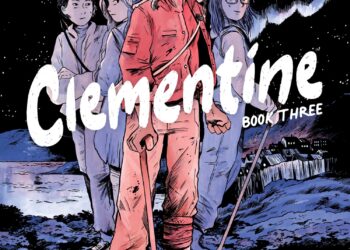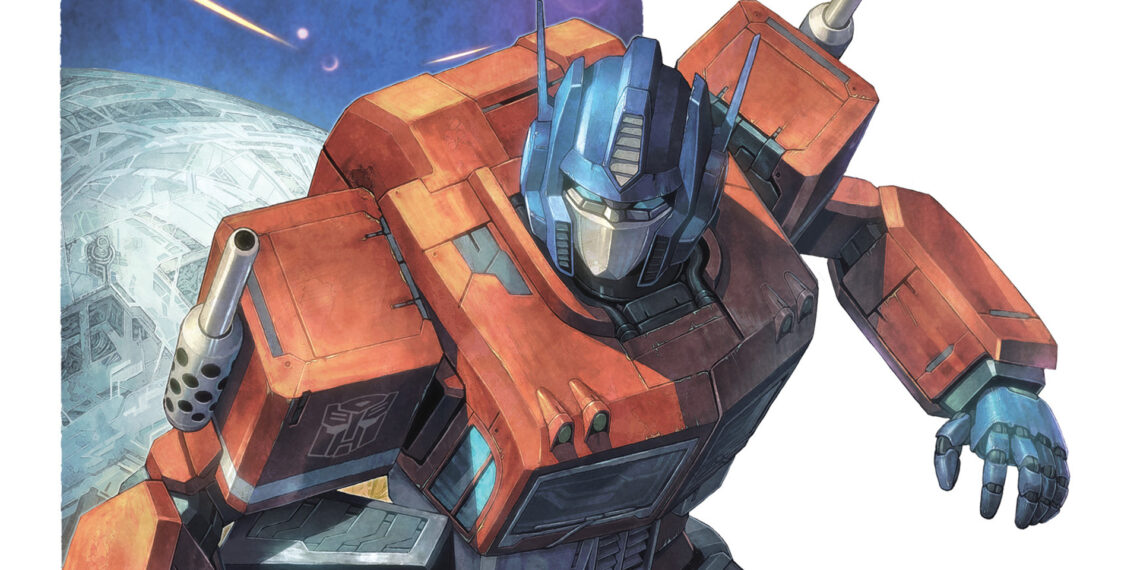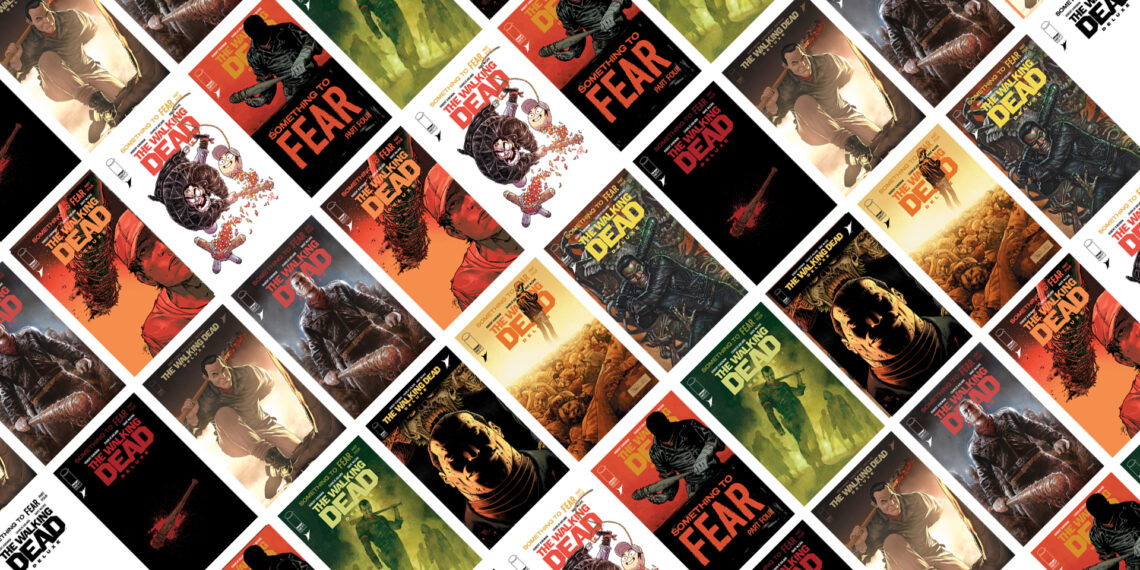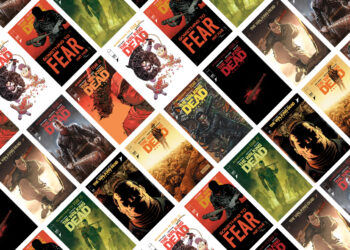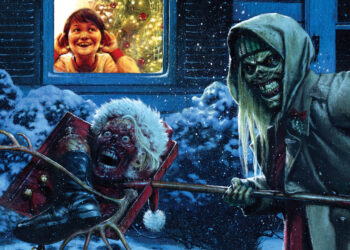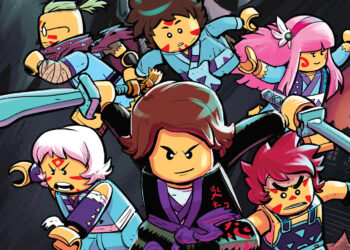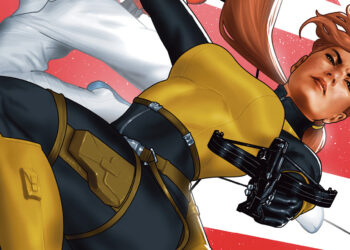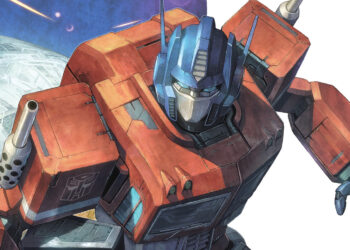Fantasy scribe Shawn Speakman’s latest novel The King-Killing Queen was an unprecedented success when it launched on Kickstarter, receiving funding in just 11 minutes. (You can still back the project and unlock its many rewards until Wednesday, May 10th.) Which makes perfect sense given Speakman’s contributions to the field. Not only as a writer, but as webmaster for fantasy icon Terry Brooks and owner of The Signed Page online bookstore and Grim Oak Press. We recently sat down with Speakman, who talked about partnering with Skybound on The King-Killing Queen and the graphic novel The Briar-Sword Monk, and what fans can expect from his new opus. Here’s what he had to say…
How did you first discover fantasy literature? What sparked your desire to be a writer?
My mother worked for Nabisco for 42 years, and when I was 12 years old, she brought home a battered beat-up copy of The Sword of Shannara by Terry Brooks. One of her girlfriends had given it to her and it was just sitting on her sewing machine. I picked it up and it changed everything.
That one moment changed the whole trajectory of my life because I fell in love with that book. A couple months later for Christmas, I received the sequels, and it was the best present I got by far that Christmas. I’ve been a fan ever since.
When I moved to Seattle to go to the University of Washington to be a biochemist of all things, I was kind of bored with schoolwork. I decided that instead of being bored I would teach myself something new. That’s right when the internet had started. It was 1996. Rather than create a website for myself, which is what people normally did back then, I decided to create a website dedicated to my favorite author, Terry Brooks.
The website took off. I had a lot of followers almost immediately. He didn’t have a web presence. Even the New York publishers then, they were not doing websites yet. It turned out that Terry Brooks was local to Seattle, and so I was seeing him all the time at events and having the most up-to-date information that I could then relate to his readers.
That’s what started it all. A couple years later I requested to be his official website because it was pretty clear that I had the best website out there. His publisher forwarded my letter to him, and he checked it out and he agreed. He and I met and we made it official. The official website launched on January 1st, 2000, and we’ve been friends ever since.
About a year and a half after that I got cancer. He and his wife, Judine, were very important, because I didn’t have my parents near me. My parents were about three hours away and Terry and Judine were right there. So they kind of became my pseudo parents in a way. That opened up a lot of doors, and eventually I started the online business page.
I met a lot of writers. I met a lot of publicists, a lot of editors at conventions and things of that nature. So I really kind of got entrenched in the whole science-fiction/fantasy universe that we all live in today. I was actually wrapping up my studies at the University of Washington in 2003 and I had just gone through cancer, and I read Sometimes the Magic Works by Terry Brooks, which is a memoir/writing guide. It really helped me finish off that last writing course.
Terry and Judine took me out to celebrate the end of my college career, and Judine made a joke about how now I could begin writing fantasy so that later on I could write in Terry’s Shannara universe and keep their kids in the lifestyle they’ve grown accustomed to. It was funny and we all laughed.
I didn’t think too much of it. But later that night I thought, “Why not me? I do know everything there is to know about Terry Brooks and the Shannara universe. I would be a good fit.” At that point, I was an okay writer. I wasn’t anything remarkable. I had put very little effort into learning anything. But I literally called up Terry the next day and said, “Look, I’d like to hone my craft a little bit and see what I can do with my own work.”
To his credit, he took me to the Maui Writers Conference. I got some great tutelage from Steven Barnes, who’s a science-fiction/fantasy writer, and I fell in love with it. I fell in love with the entire process. I literally outlined my first book on the flight back from Maui, and I’ve been writing ever since.
It wasn’t until I had cancer again, a different cancer in 2011, where I really needed help from my writer friends. I had been a Barnes & Noble manager during the first cancer, so I was covered with health insurance then. But after five or six years, I left Barnes & Noble and went out on my own. I had no idea that, basically, I was gonna get two cancers. I was outside the range of having the cancer return, and never once did I think that I’d get a different cancer. Due to the preexisting conditions that I had before with the first cancer, health insurance companies would not take me on. I was one of those guys that fell through the cracks of the US healthcare system. All of a sudden, I got this second cancer, and I was $200,000 in debt from the surgeries and from the chemo for six months. So I asked Terry if he could give me a short story that I could use to kind of keep the bill collectors at bay. Terry, to his credit, said, “You know a lot of writers now, you should probably reach out to some of these other people too and see if they can do the same.”
And I did. The next person I reached out to was New York Times bestselling writer Patrick Rothfuss. Pat immediately said yes. Once Terry and Pat were involved, there was a domino effect. All of a sudden Naomi Novik and Jacqueline Carey and these other New York Times bestselling writers came to my aid and wrote me short stories that I used to create the anthology Unfettered.
The sale of Unfettered paid for all of my medical debt, almost all of it anyway. And it gave me a platform. All of a sudden, my name was out there. People knew who I was, they were rooting for me, and it was just this wonderful blending of empathy from everybody. But also the science- fiction/fantasy community coming together and rallying around one of their own. I’m still humbled by it. I’m still blessed by it. I have returned the favor as much as I can with the other anthologies I’ve done. So I’ve paid off a lot of dental debt for a lot of my writers. [Laughs.] Because that’s something that a lot of insurance doesn’t cover.
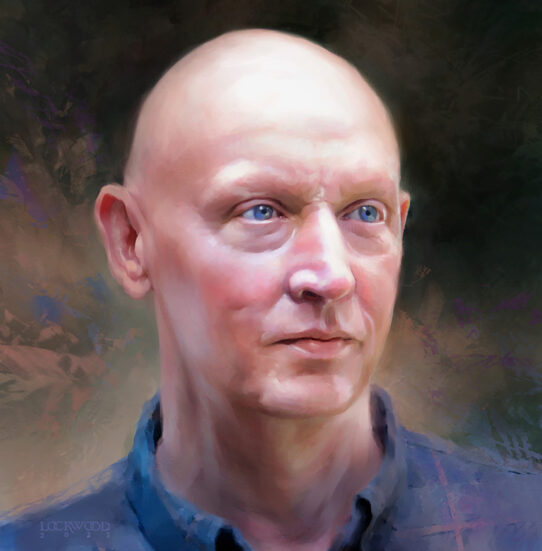
How did you first come to partner with Skybound?
That platform really allowed me to build my own brand, my own name, and I realized that I’d been given this gift even though it came out of a very dark time. I had this silver lining that I couldn’t ignore, and I kept working at my craft. When Unfettered was published, Brandon Sanderson, who is a longtime friend, said, “You really need to keep going with this. You created Grim Oak Press and there’s a reason for that and you should continue doing it.”
So I decided to do special editions of well-established and bestselling fantasy novels, a lot of which I’d read as a teen. That was the start. In ten years, we produced some very, very beautiful books. I think that that’s what captured Skybound and David Alpert’s attention, the fact that I was producing these beautiful volumes. I think David wanted to know more about that. That’s where our initial conversation started. Now The King-Killing Queen is gonna be coming out from Grim Oak and Skybound together in a partnership. I couldn’t be happier with the results.
It’s resulted in a tremendous Kickstarter turnout…
Yeah. I’m very pleased by the Kickstarter so far. This is my fourth novel. My first one was Song of the Fell Hammer, which was this giant 260,000-word epic fantasy that was never picked up by New York City publishers. I kind of treat that almost like a trunk book. Almost every single author out there has a trunk book, or seven trunk books. Those are their learning books. The books [with which] they basically learned how to do what they do. Mine is published out there as an e-book. Eventually, years later, I would create a hardcover because there was so much demand for it. But yeah, Song of the Fell Hammer was the first book.
But for all intents and purposes of what we’re talking about today, The Dark Thorn is the most important book. Because that’s the book that I really poured a lot of myself into. It was the book that I was writing right before I went through cancer the second time. And it ties into The King-Killing Queen.
You’ve worked in a variety of different sub-genres. Do you like exploring the different opportunities they present?
As of right now, I’ve written an epic fantasy, an urban fantasy, a science fantasy, and now a high fantasy. It sounds like they’re all one and the same, but they really are different in their execution. I don’t like doing the same thing twice, especially as a writer. I don’t think that’s the way that you push yourself as a writer and become better.
I started with epic fantasy because I grew out of that Terry Brooks tradition, where he was known for his 800-page epic fantasies. Since I was so connected with his readership, I really felt strongly that that’s where I wanted to start. That’s where my first love was when I was 12 years old. I felt like that was a good place. Then I had this amazing idea for an urban fantasy that kind of tied Arthurian legend to our current world and contemporary times.
It just wouldn’t let me go, and I felt like I needed to write it. That’s where The Dark Thorn came from. It’s a book about a broken man who lives on the streets of Seattle, as a homeless knight. His job is to protect this world from the fay world and to keep them separate at all costs. That original character, Richard, he’s very much based on my father, who had PTSD coming back from Vietnam. So it was almost a cathartic way for me to work through a lot of the issues that I had with my father growing up, due to his mental illness. It presented its own challenges because I was creating this world that was very rich in Celtic mythology. I had great fun writing it. I published that book as a standalone book. It works well on its own. I was waiting to see what people thought of it, and then I got the second cancer. So that took me out of the game for a good solid year or even a year and a half. Because I just had to get healthy again.
It took me a long time, the second time, to bounce back from it. By the time I came back to it, I had already been asked to write a short story for an anthology. It’s a science fiction anthology, and I’d never thought about writing science fiction. I did not read a lot of science fiction when I was young. I didn’t even read Dune until I was 25 or 26. I was gonna turn this editor down for his anthology and I was literally writing it out to him on Facebook over Messenger saying, “Don’t you know that I write fantasy?” That kind of snide response. And I just had this thunderbolt of an idea of a young woman in the desert, with a floating soccer ball of all things, finding this giant robot hand in the desert. I had to know more. I wrote that short story and turned it in to the editor for MECH: Age of Steel.
That turned out to be The Tempered Steel of Antiquity Grey. That was the beginning of that science fantasy. It’s kind of a blend of Dune and Star Wars. So when it comes to how I choose my projects… It was really difficult for me to peg that, because this was an idea that just came out of nowhere and I had to write it and eventually it led to the full novel and another novella. I felt very comfortable with that book. It’s gotten very good reviews.
Right before Skybound and I started talking about this possibility of partnering and working together, I had written a short story for another anthology, a grimdark anthology called The King Must Fall. So eventually when David Alpert and I started talking about this, he said, “Well, what do you have that I can look at?” I said, “You know, I got this book, I got this book, I got this book, and I got this short story that’s gonna publish here in another month or so.” The short story is what almost everybody liked. A high fantasy story, Arthurian in nature, about a young woman who discovers her past is not what she thought, and her future is in serious jeopardy because of just who she is. I wanted to know more about her story too, just like I did with Antiquity.
So that’s how Sylvie Raventress was born. She was born out of this need to know more about her character out of this short story. As I was finishing writing the full novel, I realized that I was telling a prequel to The Dark Thorn. I really fought against it for a long time. I didn’t want them connected in any way. But the more I wrote, the more I saw that I was basically writing this great prequel that takes place before The Dark Thorn’s events. The Dark Thorn takes place in our current time. The King-Killing Queen takes place in the 1600s’ medieval France.
So to answer your question, I love writing in all the genres because it pushes me, but I really don’t have a choice in the matter. I feel like sometimes the muse has her own ideas about what my future’s going to hold.
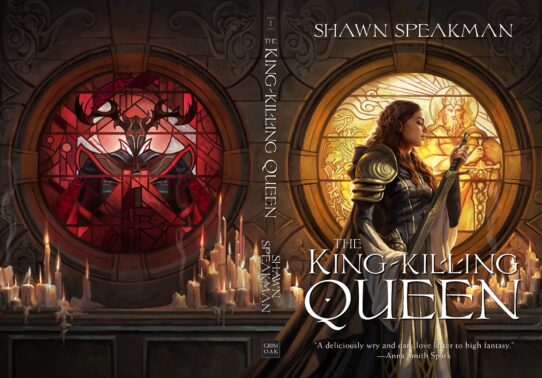
In addition to The King-Killing Queen, you’re partnering with Skybound on a graphic novel, The Briar-Sword Monk. What prompted you to tackle that medium?
I was writing The King-Killing Queen, and I got to a scene about three quarters of the way through the book. Where I realized I needed to lay down some historical groundwork for the world a little bit and how I would go about doing that. As a writer, you never want to do an info dump. So I had to figure out a clever way to do that.
I did that in a story-within-a-story situation. My main character, Sylvie, is essentially being told this story from one of the light weavers in an abbey, where these women are able to manipulate the light. So this light weaver is telling a story while she’s manipulating the light and showcasing this story that took place a thousand years earlier.
I couldn’t easily relay the entire story because then I’d be stopping the narrative of The King- Killing Queen in its tracks. So I had to really focus on the last third of that story, which really bothered me because I want my stories told in all three acts.
But for space purposes, I couldn’t tell the whole thing. I just let it go and finished writing the novel. When I started talking to Skybound about the possibilities of what we could do with the Kickstarter, I threw it out there that I could write the rest of that tale and write the first two acts to go along with the third, and that it might make for a really good short story that we could use for publicity or marketing. Maybe we could adapt it into a graphic novel… And Skybound is known for their graphic novels. That’s how it was born, basically. I felt like that was a really good avenue to go down, and to Skybound was happy with that. They thought it was a great idea and we started talking about it.
That’s where it started. I had to finish the short story and then we had to find the artist and the writer to adapt it. I already had some ideas in mind because I have some friends that work in the industry, and that’s how The Briar-Sword Monk was born.

Might we see more graphic novels from you?
Oh yeah, I’m semi-OCD in my nature. I like things to look good on the shelf. A lot of fantasy collectors are like that. At least book collectors are, they want uniformity on their shelves. So, when I write the sequel to The King-Killing Queen, I will be writing the next part of The Briar-Sword Monk.
I’ll write the novel first, and then I’ll write the short story. Then I’ll basically pitch both to Skybound. If they want to do it again, then we’ll do it again. So we’ll have a trilogy. We’ll have a trilogy of novels and a trilogy of graphic novels. I like that symmetry.
What are you working on right now?
I’m actually editing The Dark Thorn. The dark thorn was never professionally edited. It’s gotten great reviews. I’m really happy with the book. But I realized early on, during those conversations with Skybound, that I really should put my best foot forward with The Dark Thorn as well.
So I hired Betsy Mitchell, the former editor-in-chief of Del Rey Books from New York City. She edits all my work. She went back and edited the book. So I’m putting it back together now. Then I only have four chapters left in the sequel to The Dark Thorn, and that’s The Everwinter Wraith.
When I’m done with Everwinter Wraith, which I expect to be sometime early this summer, I have actually already written the first two chapters of the sequel to The King-Killing Queen. I already have a really good idea of where I’m going with the short story as well.
Why do you think The King-Killing Queen will appeal to comics readers, or to those genre fans who are new to fantasy novels?
My writing in general is very cinematic. I’ve been told that repeatedly. My prose and how I approach a scene and even how a book is laid out, it’s cinematic. When people read it, it’s like a movie in their head. My prose work connects to a visual medium like comic books. I think it plays very well to that. People will be able to see the graphic novel in their head when they’re reading my book.





